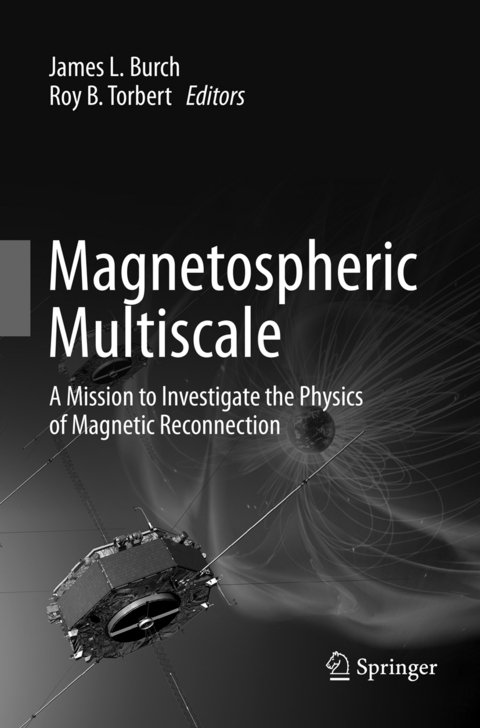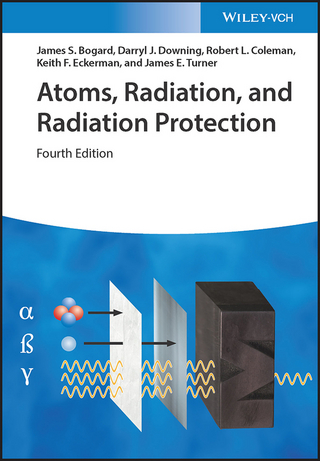
Magnetospheric Multiscale
Springer (Verlag)
978-94-024-1420-2 (ISBN)
This volume, which describes the MMS mission design, observatories, instrumentation, and operations, is aimed at researchers and graduate students in magnetospheric physics and plasma physics. Researchers using the publicly available MMS data will find it particularly useful.
Previously published in Space Science Reviews, Volume 199, Nos. 1-4, 2016.
James L. Burch is Vice-President of the Space Science and Engineering Division of Southwest Research Institute (San Antonio, TX) and Prinicipal Investigator of the Magnetospheric Multiscale (MMS) mission. He is an experimental space physicist investigating various aspects of the interaction of the solar wind with the magnetospheres of the Earth and Saturn and with comets. He has been Principal Investigator for instruments on the NASA Dynamics Explorer spacecraft and the Space Shuttle. Beginning in 1996, he was P.I. of the first NASA Medium - Class Explorer mission (IMAGE), which performed pioneering global, multispectral imaging of plasmas populating the Earth’s magnetosphere. Also starting in 1996 and continuing until 2016, he is P.I. of the Ion and Electron Sensor (IES) on the European Space Agency’s Rosetta mission, which in 2014 became the first mission to rendezvous with and orbit a comet. Dr. Burch received his Ph.D. in space science from Rice University in 1968. He isa Fellow of the American Geophysical Union and in 2010 was awarded the AGU’s Fleming Medal. Roy B. Torbert is a professor of physics at the University of New Hampshire (UNH) and Director of the SwRI-EOS (Earth, Oceans, and Space) Department, which is located on the UNH campus. He is the Principal Investigator for the Electron Drift Instrument on the CLUSTER (ESA/NASA) mission and has been Co-Investigator on many NASA missions, most recently the Van Allan Probes (RBSP), WIND, and POLAR missions. He has been principal investigator on multiple sounding rocket missions for NASA. Currently, he serves as the Lead Investigator for the FIELDS instrumentation suite for the Magnetospheric Multiscale (MMS) mission, as well as its Deputy Principal Investigator. He received his Ph.D. in physics from the University of California in Berkeley in 1979.
Preface.- Magnetic Multiscale Overview and Science Objectives.- Magnetospheric Multiscale Science Mission Profile and Operations.- The MMS Observatory.- The Fast Plasma Instrument for MMS.- Hot Plasma Composition Analyzer for the Magnetospheric Multiscale Mission.- The Energetic Particle Detector (EPD) Investigation and the Energetic Ion Spectrometer (EIS) for he Magnetospheric Multiscale (MMS) Mission.- The Fly’s Eye Energetic Particle Spectrometer (FEEPS) Sensors for the Magnetospheric Multiscale (MMS) Mission.- Magnetospheric Multiscale Instrument Suite Operations and Data System.- The FIELDS Instrument Suite on MMS: Scientific Objectives, Measurements, and Data Products.- The Magnetospheric Multiscale Magnetometers.- The Search-Coil Magnetometer for MMS.- The Axial Double Probe and Fields Signal Processing for the MMS Mission.- The Spin-Plane Double Probe Electric Field Instrument for MMS.- The Electron Drift Instrument for MMS.- Active Spacecraft Potential Control Investigation.- Theory and Modeling for the Magnetospheric Multiscale Mission.- Establishing the Context for Reconnection Diffusion Region Encounters and Strategies for the Capture and Transmission of Diffusion Region Burst Data by MMS.- What Can We Learn about Magnetotail Reconnection from 2D PIC Harris-Sheet Simulations?.- Education and Communication for the Magnetospheric Multiscale Mission.
| Erscheinungsdatum | 27.08.2018 |
|---|---|
| Zusatzinfo | 437 Illustrations, color; 58 Illustrations, black and white; VII, 745 p. 495 illus., 437 illus. in color. |
| Verlagsort | Dordrecht |
| Sprache | englisch |
| Maße | 155 x 235 mm |
| Themenwelt | Naturwissenschaften ► Physik / Astronomie ► Angewandte Physik |
| Naturwissenschaften ► Physik / Astronomie ► Astronomie / Astrophysik | |
| Naturwissenschaften ► Physik / Astronomie ► Plasmaphysik | |
| Technik ► Luft- / Raumfahrttechnik | |
| Schlagworte | Astrophysical laboratory • Heliophysics and magnetosphere • magnetospheric physics • Microphysics of magnetic reconnection • MMS design • NASA instrumentation • NASA’s Magnetospheric Multiscale mission • open access |
| ISBN-10 | 94-024-1420-7 / 9402414207 |
| ISBN-13 | 978-94-024-1420-2 / 9789402414202 |
| Zustand | Neuware |
| Haben Sie eine Frage zum Produkt? |
aus dem Bereich


